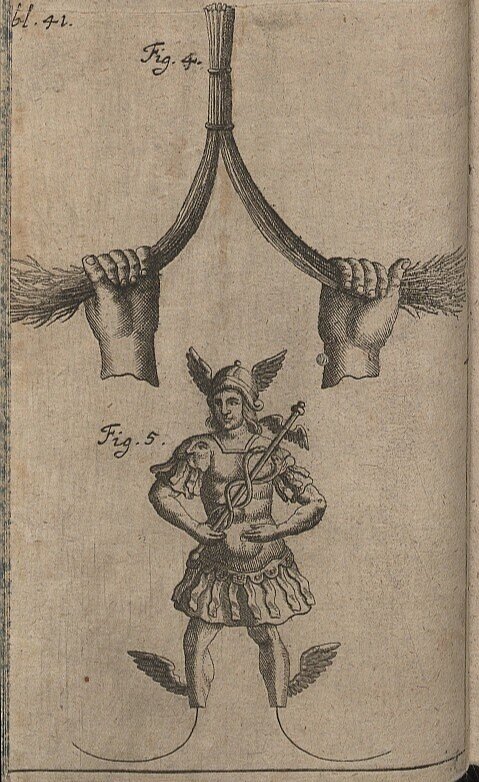The Old Occupation of Dowser
Was your ancestor a “sourcier”, or dowser? Learn what this magical occupation was like in New France and Canada.
Cliquez ici pour la version française
Le Sourcier | The Dowser
Circa 1732 drawing by Pierre Lebrun. Wikimedia Commons.
The sourcier, or dowser, was a person capable of finding underground water sources using a hazel rod in the shape of a "Y" (a forked twig). He would walk around an area with the rod in his hands, usually with the palms facing up, tensed, until the wand twisted violently in his hands to indicate that water was below. Alternatively, he used a pendulum. The dowser’s goal was to determine the ideal location to build a well.
Dowsers claimed to have a gift or an inherited power to find water. The rod or pendulum, they said, simply amplified that power, which made it move so dramatically.
The use of such rods dates back to ancient times, to the virgula divina (the divining rod) of the ancient Greeks, Romans and Persians. Over the years, some dowsers claimed they could locate minerals, metals, buried treasure or even dead bodies.
The profession still exists today; however, it is limited to the search for water.
Click here to listen to a Stuff You Should Know podcast episode on dowsing.
An image from A tour in Wales by Thomas Pennant (1726-1798), artist unknown. Wikimedia Commons.
1700 copper engraving on paper by Johann Gottfried Zeidler & Christian Thomasius. Deutsche Fotothek.
Watch this video to learn more about the intuitive powers of dowsing from an English perspective.
Sources and further reading:
Gilles Angers, “Le dernier des sourciers”, La Presse (https://www.lapresse.ca/maison/renovation/200508/10/01-867313-le-dernier-des-sourciers.php), 20 Aug 2005.
Sabine Baring-Gould, “Curious myths of the Middle Ages” (London, Rivingtons: 1877), digitized and uploaded by Archive.org (https://archive.org/details/curiousmythsofmi00bariuoft/page/n7/mode/2up), 28 Jun 2007.
J. W. Gregory, “Water Divining”, Annual report of the Board of Regents of the Smithsonian Institution, digitized and uploaded by Archive.org on August 26, 2008 (https://archive.org/details/annualreportofbo1928smit),1928, 325-348.
Sharon A. Hill, "Witching for water", Spooky Geology (http://spookygeology.com/witching-for-water/), 19 Mar 2017.
Claude Lemay, "Fonctions et métiers délaissés", l'Ancêtre, number 281, volume 34, winter 2008, and number 280, volume 34, winter 2007; electronic edition, Société généalogique de Québec (www.sgq.qc.ca/images/_SGQ/R_LAncetre_plus_libre/ENT-FONCTIONS-METIERS-DELAISSES.pdf).
William E. Whittaker, “Grave Dowsing Reconsidered”, Office of the State Archaeologist, University of Iowa (https://archaeology.uiowa.edu/file/726/download?token=DqQdlDVi).


